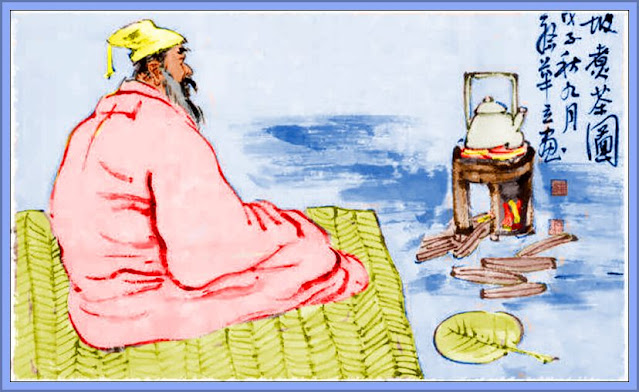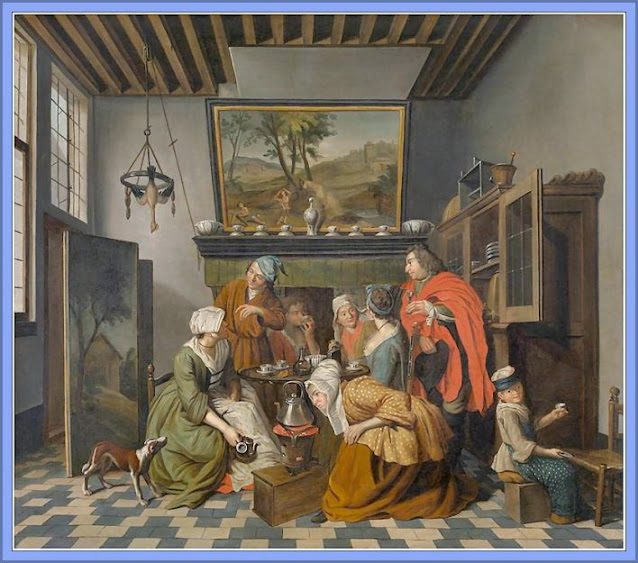 |
| Chá Drinking Goes Back A Long Way .... |
Any WWII British war film is likely to have a reference to 'a cup of Cha' (pronounced Char), which comes from the Mandarin Chinese term for tea 'Chá'.
The first Europeans that we know of who drank tea were Portuguese priests and merchants in China during the 16th century called chá. An Italian, the Venetian writer Giambattista Ramusio, who recorded the existence of 'Chiai' in 1545, in a volume of his work 'Delle navigationi e viaggi' (Of the navigation's and journeys), which was an early traveller book to various destinations then opening up to the Western World.
But the first recorded European shipment of tea was when the Dutch bought their first assignment of tea, which was from Hirado in Japan, to be shipped to Europe in 1609, where tea became a fashionable drink in the Netherlands. Us Brits were somewhat late to the tea party - the East India Company office in Japan was moving tea by 1615. It was described as "the best sort of chaw" by Richard Wickham, who ran the East India Company office at that time.
Tea was finally sold in a coffee house in London in 1657, and Samuel Pepys tasted tea in 1660. Tea, however, was very expensive until the latter part of that period, and was not widely consumed until the price dropped in the 18th Century. By then, British drinkers preferred to add sugar and milk to black tea, and so black tea overtook green tea in popularity in the 1720's.
 |
| Jan Josef Horemans the Younger, 'Tea Time' |
However the great stately homes and houses of England had already developed some serious interest in tea, from much earlier in time than had been previously thought. The curator of Temple Newsam House, near Leeds, has recently uncovered a bill for 'medical ingredients' dated 1644. The itemised bill indicated that bottles of the "China Drink" had been purchased, at the then price of '4 shillings'.
In 2017, the relative value of 4 shillings from 1644, using the Retail Price Index, is between £32 and £34, which makes the China drink a very expensive medicinal drink for the time. As this is most certainly not the first time that 'the china drink' had been purchased by this house, nor in Britain, it appears that regular imports were under way a lot earlier than had previously been presumed.








It's interesting you say that black tea overtook green tea in popularity in the 1720s because I understood that there was no green tea in Britain before due to the long voyages that were necessary to transport the plant from China. I thought too that it was the long voyages which created black tea.
ReplyDeleteI do know that there was no tea in India before some daring botanic espionage by the British liberated its cultivation from the Chinese in the middle of the 19th Century.
Your right that all Tea is made from Camellia Sinensis leaves, and Green tea is made from leaves that have not undergone the same withering and oxidation process used to make oolong teas and black teas. All my research says that green tea was exported from China and introduced in to the coffeehouses of London shortly before the Stuart Restoration in 1660.
DeleteI was aware that like silk and porcelain production, tea production was protected by the Chinese but eventually stolen or discovered by the West, thus breaking the monopoly China had held.
Thanks for the comment as usual.